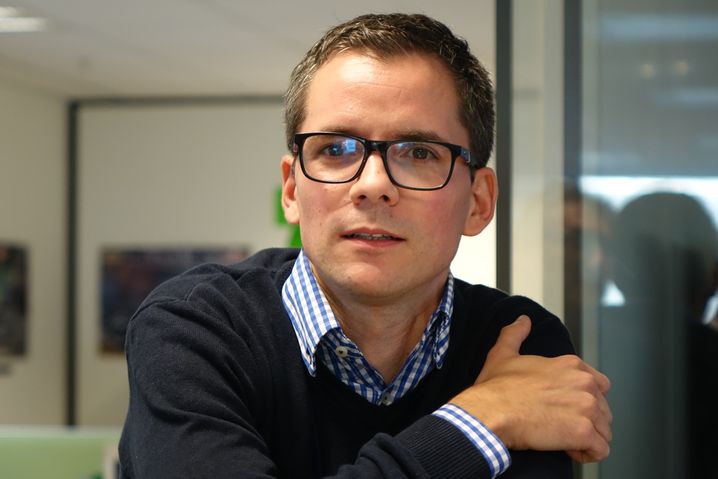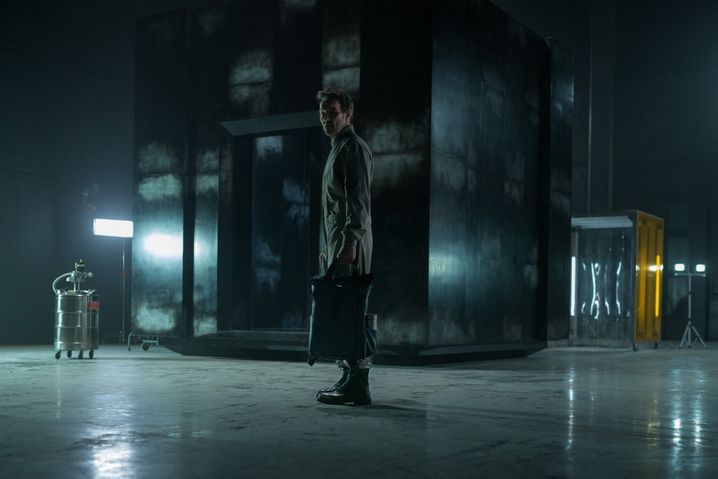Back to the future. In Dark Matterthe series broadcast by Apple TV+ from May 8, a scientist is plunged into parallel lives thanks to quantum physics.
To understand its workings, 20 minutes questioned Xavier Vasques, vice-president and CTO (technical director) of IBM Technology and R & D. At the head of a team of three hundred researchers, he returns in particular to the experience of Schrödinger’s cat mentioned in the series and reveals to us how quantum computing will very soon open up the field of many possibilities…
How to explain what a quantum computer is?
Classical computing processes information with 0s and 1s. Or small transistors which open and close and let a current pass or not. By performing these operations, we make calculations. Which remain very simple. We are coding an application. We compile it. It transforms into 0 and 1.

In the quantum framework, transistors are transformed into atoms. We send a signal and we control the atoms. When we want to have the state of an atom at time “t”, we must imagine a sphere, with state 0 at the South pole, and state 1 at the North pole, and an arrow which starts from the center and therefore the end indicates the state in which the atom is found. This state, as long as it is not measured, may have a certain probability of being state 1, and a certain probability of being state 0. We are in a state of superposition.
That’s to say ?
Physicists say: “don’t ask me how it works, it’s nature that works like that!” “. For ordinary people, accustomed to the world of the infinitely large, it is indeed difficult to understand. This is the story of Schrödinger’s cat experiment. Consider a thought experiment in quantum physics designed by Erwin Schrödinger to illustrate the strangeness of quantum superposition.

Let’s imagine a cat in a closed box with a device that can kill it randomly. According to the principles of quantum mechanics, until the box is opened, the cat is considered to be both alive and dead. It is only when the box is opened that the cat’s state becomes one or the other, thus illustrating the paradoxes of quantum mechanics applied to everyday objects.
When we send a calculation or a signal to an atom, we will master precisely these possibilities.
At the same time, there is talk of quantum entanglement. What is it about ?
In the same physical system there are several atoms. If we know the result of an atom when we request it, we know that of the other atoms which are dependent on each other. They are all linked.
Entanglement is therefore like a maze: a classic computer tries the paths one after the other until it finds the right one. With entanglement, even if we know the “one” path and are wrong, we can know the correct result right away (because the atoms sent to explore the maze are entangled). Hence extreme speed.

What kind of speed is this?
I give you an example. A classical computer takes 0.0025 seconds to solve a multiplication: N x M = P. N and M being very large numbers, we are talking about a size of 2048 bits! A quantum computer takes 75 seconds!
But take the opposite operation: you know P, but must find N and M. In this case, a classic computer takes 4.5 billion CPU years (one CPU year corresponds to one million operations per second). The result is not even imaginable! The quantum computer would take 8 hours depending on its configuration. It is designed for this type of calculation, where exponential power is required.
Concretely, what will a quantum computer be used for?
Many scientific challenges are not solved today because of the lack of speed of calculation. That, in particular, of the modeling of molecules.
To make a ton of fertilizer, for example, you have to burn a ton of fossil fuels. This represents between 3 and 4% of global CO2 emissions. Many scientists have been interested in this topic because some plants produce their own fertilizers. To find out their secrets, we will do molecular modeling. But with classical computers, we can only model very simple molecules which have one to three atoms. We therefore do not know how to model that of coffee which has twenty-four atoms. The quantum computer lends itself very well to this type of calculation. Thanks to him, we will unlock projects like this. Or others around the battery of the future, materials that will make planes lighter….
The infinitely small at the service of the infinitely large, therefore…
Exactly. Another example: how to find the ideal route for a fleet of ships delivering natural gas across the planet. Imagine five hundred boats, ports for loading, others for unloading. In the middle, paths to find taking into account the weather, fuel, areas where you can pass or not. For the shipowner, it is very complicated to find the optimal path! Quantum will lend itself perfectly to this.
For example, IBM works with ExxonMobil on this type of problem. It is in the construction phase. The algorithms already exist. We are waiting for the computing power to develop.
The world of finance must be on the lookout?
Yes, because quantum helps to have better precision and faster calculations. Replacing classical financial models with quantum models will facilitate the development of sustainable financial products and no longer based on limited parameters with a lot of uncertainty. Faced with quantum, traders will limit the risks in a frank manner. Underlying this is much more controlled growth.
What is the deadline for all these promises?
There are universes where this will go faster than in others, like that of chemistry. Then will come the worlds of optimization, crypto, machine learning to detect fraud, for example. This will be diluted in the years to come, although we must remain cautious.
At IBM, we have a road map since 2016. For now, we’re following her. What we know is that in 2029-2030, we will have a computer that can calculate without error. From 2033, we will be able to do very large mass calculations.
What does a quantum computer look like?
IBM has already deployed sixty systems of this type around the world, but not yet in France. A quantum computer fits in a room, contains atoms, immersed in a tank with liquid helium close to absolute zero, connected by cables. This environment must be disturbed as little as possible. It’s not a big one data center like a football field.

